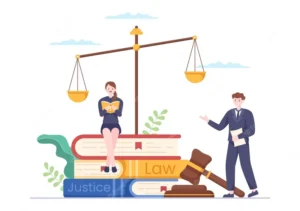Corporate Responsibility: What Is It, and Why Does It Matter?

Corporate responsibility is no longer a mere buzzword; it’s a defining factor in how modern corporations operate and are perceived by the public. This in-depth exploration of corporate responsibility draws insights from authoritative texts, including “Business Associations,” “The Anatomy of Corporate Law,” “Easterbrook and Fischel’s The Economic Structure of Corporate Law,” and other seminal works.
Contents
I. Understanding Corporate Responsibility
A. Defining Corporate Responsibility
- Conceptual FrameworkCorporate responsibility encompasses a wide array of ethical, legal, and social considerations. We establish a comprehensive definition drawing from “The Oxford Handbook of Corporate Law and Governance.”
- Historical Evolution“The Law of Corporations in a Nutshell” traces the historical evolution of corporate responsibility, shedding light on its origins and development.
B. Dimensions of Corporate Responsibility
- Social ResponsibilityCorporations are increasingly expected to be socially responsible. We delve into the various aspects of social responsibility as outlined in “Business Law and the Regulation of Business.”
- Environmental ResponsibilityEnvironmental sustainability is a key component of corporate responsibility. “The Economic Structure of Corporate Law” examines the environmental obligations of corporations.
II. The Importance of Corporate Responsibility
A. Building Public Trust
- Trust and ReputationCorporate responsibility plays a pivotal role in building and maintaining public trust. We analyze the relationship between corporate actions and reputation using insights from “Business Associations.”
- Consumer and Investor Confidence“Corporate Finance and the Securities Laws” demonstrates how responsible corporate behavior influences consumer and investor confidence.
B. Legal and Ethical Compliance
- Compliance FrameworkCorporations are subject to legal and ethical norms. We explore the legal obligations and ethical standards corporations must adhere to, referencing “The Anatomy of Corporate Law.”
- Consequences of Non-ComplianceNon-compliance with corporate responsibility can result in legal repercussions. We discuss potential consequences using examples from “Mergers and Acquisitions: Cases and Materials.”
III. The Role of Leadership
A. Board of Directors
- Directorial OversightThe board of directors plays a critical role in shaping a corporation’s commitment to responsibility. We analyze the board’s responsibilities based on “The Oxford Handbook of Corporate Law and Governance.”
- Fiduciary DutiesDirectors owe fiduciary duties to the corporation and shareholders. We examine how these duties intersect with corporate responsibility using insights from “The Law of Corporations in a Nutshell.”
B. CEO and Executive Leadership
- Executive AccountabilityCorporate leaders, particularly the CEO, are pivotal in driving responsible corporate behavior. “Easterbrook and Fischel’s The Economic Structure of Corporate Law” explores executive accountability.
- Setting the ToneWe discuss how executive leadership sets the tone for corporate responsibility initiatives, referencing “Business Law and the Regulation of Business.”
IV. Corporate Responsibility in Practice
A. Case Studies
- Exemplary CorporationsWe examine real-world case studies of corporations known for their responsible practices, drawing from “Mergers and Acquisitions: Cases and Materials.”
- Corporate Scandals“The Anatomy of Corporate Law” provides insights into corporate scandals resulting from lapses in responsibility.
B. Implementation Strategies
- Corporate Responsibility ProgramsWe explore the design and execution of corporate responsibility programs using examples and guidance from “The Oxford Handbook of Corporate Law and Governance.”
- Measuring ImpactMeasuring the impact of corporate responsibility initiatives is crucial. We discuss metrics and evaluation methods based on “Business Law and the Regulation of Business.”
V. Conclusion
- The Imperative of Corporate Responsibility
Corporate responsibility is not a choice; it’s an imperative. This concluding section emphasizes why corporations must prioritize responsibility in today’s complex business landscape, drawing on the combined wisdom of authoritative texts in corporate law and governance.









